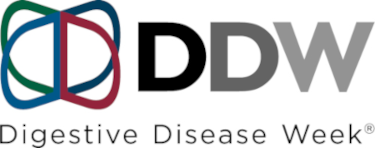Sp1251
MECHANISMS FOR ESOPHAGEAL SMOOTH MUSCLE DYSFUNCTION IN EOE
Date
May 9, 2023
Explore related products in the following collection:
Tracks
Related Products
PANEL DISCUSSION / Q&A
Concomitant esophageal dysmotility can be present in up to 2/3 of patients with EoE and GERD. Esophageal dysmotility contribute to symptoms in these patients and can be a reason for a suboptimal response to therapy…
INTRODUCTION
SOCIETY: AGA
PLACEHOLDER
Perturbations in the gut mucosal immune response contributes to IBD. Non-immune cell popopulations including epithelial and stromal cells also play an important role in intestinal inflammation…
PLACEHOLDER
Switching from originator to biosimilar infliximab (IFX) is effective and safe. However, data on multiple switching are scarce. The Edinburgh IBD unit has undertaken three switch programmes: (1) Remicade to CT-P13 (2016), (2) CT-P13 to SB2 (2020), and (3) SB2 to CT-P13 (2021)…


